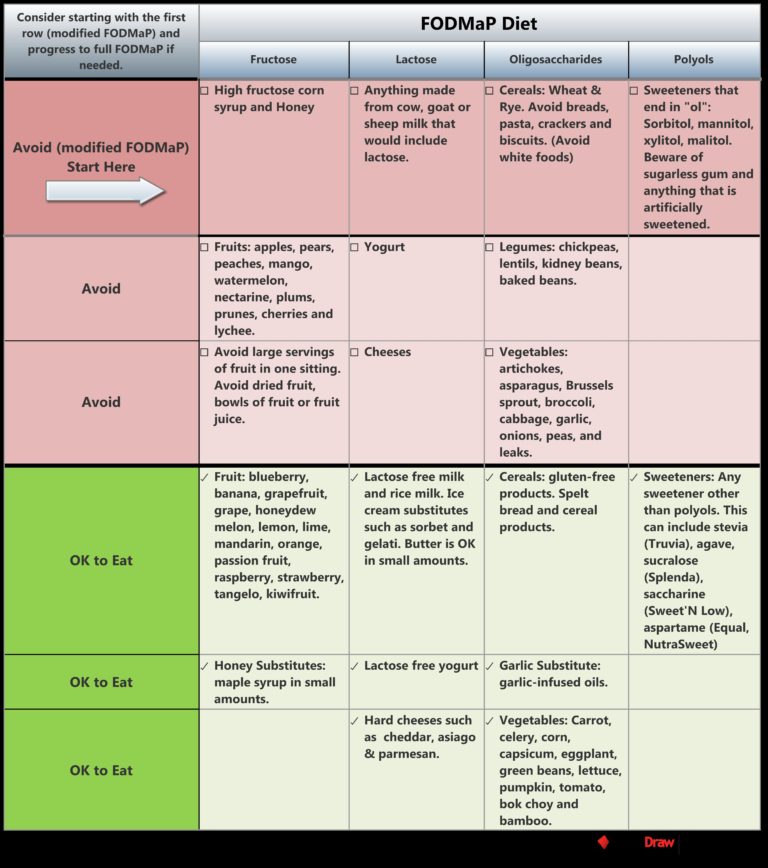What is FODMaP?
The FODMaP diet is a form of elimination diet that focuses specifically on foods that contain specific types of fermentable sugars. FODMaP is an acronym built on the names of the 5 classes of sugars that are eliminated (Figure 1). Increasing numbers of studies support its use for reducing symptoms of irritable bowel syndrome (IBS). However, most of these studies were short-term (less than 6 weeks), utilized dietitians with specialized training, and did not conclusively show that following this diet is more effective than other general dietary advice (e.g., decreasing alcohol, changing the amount of fat in the diet, or increasing dietary fiber).[1][2] That said, the FODMaP diet plan can serve as a framework for an elimination diet that can be individualized, especially if more general elimination diet approaches prove unhelpful.
The Low FODMaP diet works in two ways:
- It is low in sugars that can be difficult to absorb. These sugars can lead to increased fermentation and gas.
- Reducing overall sugar intake reduces the osmotic pull of fluids into the intestine, which can reduce diarrhea. This may explain why some research indicates that the FODMaP diet improves pain and boating symptoms by up to 75%, predominately in those with IBS associated with diarrhea.[2][3]

The Modified Low FODMaP Diet
The Low FODMaP diet can lead to a significantly lowered intake of fiber from fruits and vegetables, which could lead to micronutrient deficiencies and adversely affect the microbiome. Although it has not been extensively studied, some people may benefit from a modified FODMaP diet, which prevents these reductions in nutrients by allowing for continued intake of some higher FODMaP foods. This eating approach begins with having patients avoid dairy, wheat, rye, high-fructose corn syrup, honey, and polyol sugars (first row of Figure 2). If this doesn't work after a trial of a few weeks, they can then do the full FODMaP diet, as outlined in Figure 2.

Author(s)
The FODMaP Diet was written by David Rakel, MD and updated by David Lessens, MD, MPH (2014, updated 2020). Sections were adapted from Evidence-based dietary management of functional gastrointestinal symptoms: The FODMAP approach by Peter Gibson and S.J. Shepherd.
































